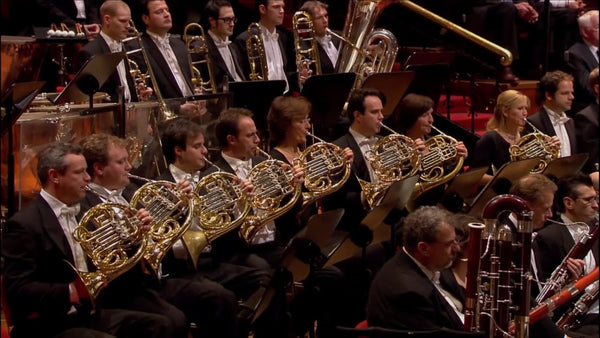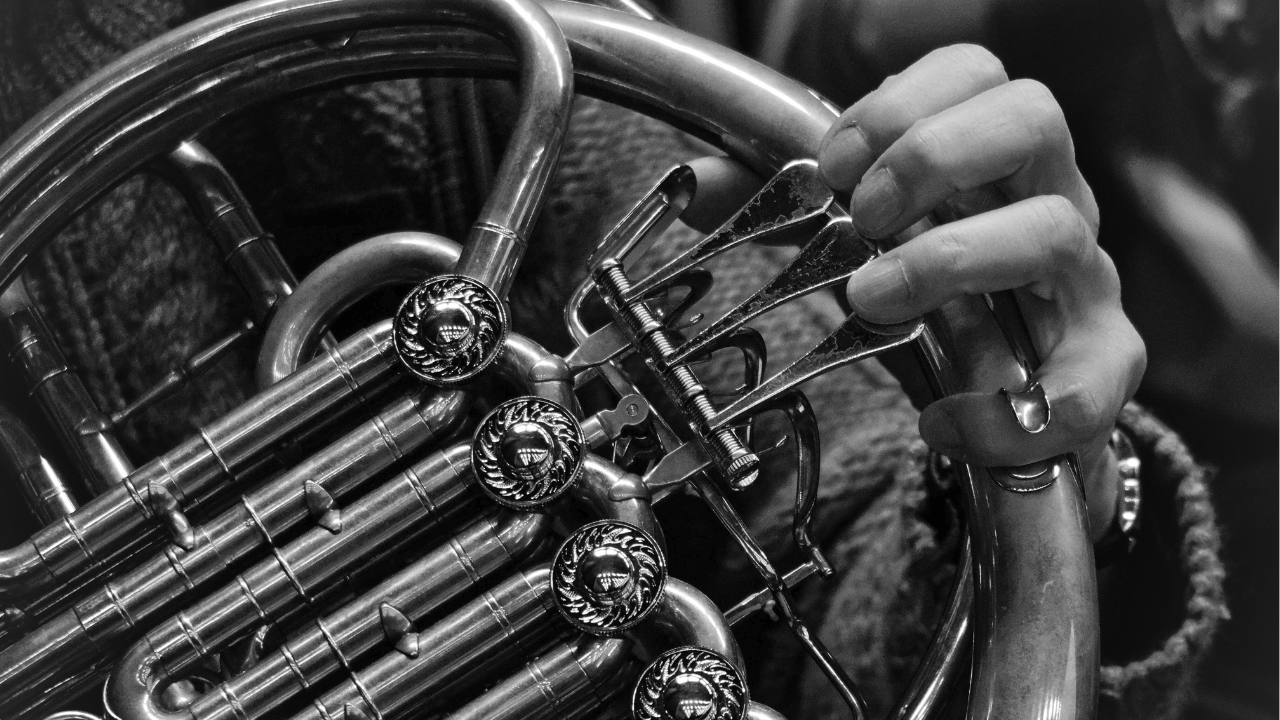With the origin tracing back to ancient hunting horns and early brass instruments, the modern orchestral French horn has a long history. However, it began to take its distinctive coiled shape and valves in the 17th and 18th centuries. Today the French horn takes an important place in various musical styles. Let’s delve into this topic in more detail.
French Horn in Classical Music
The French horn serves the key instrument for carrying melodic lines and solos in orchestral compositions such as symphonies and concertos. Classical orchestras and chamber ensembles actively utilize it to produce delicate passages and powerful tones contributing to the dynamic contrasts and dramatic effects of the music. Composers write expressive passages for this instrument, including serene, pastoral, hunting and heroic themes. It helps to maintain the needed atmosphere of the music and evoke certain moods.

The French horn also contributes to the harmonic texture of the orchestra, blending with trumpets and trombones. This musical combination results in rich, full-bodied chords. As the instrument can play high and low registers, musicians are able to achieve various harmonics within the ensemble. You can hear the beauty of the French horn in compositions of famous musicians as Wolfgang Amadeus Mozart – Horn Concerto No. 1 in D major, Richard Strauss – Horn Concerto No. 1 in E-flat major, Pyotr Tchaikovsky – Symphony No. 5 in E minor, Strauss – Ein Heldenleben, as well as in many compositions by Haydn, Wagner, Mahler, and Brahms.
French Horn in Film Music
By using this instrument in their orchestral scores, film composers add emotional impact to soundtracks. Horn melodies create a more convincing atmosphere, underline the unspoken thoughts and emotions of main characters, build a sense of continuity in a film and offer the foundational support for the dramatic development of a scene.
The bright example of the French horn’s presence in the film is “Binary Sunset” horn solo from Star Wars Episode IV: A New Hope (1977) by George Lucas. It’s present in one of the most iconic scenes and fulfills two main purposes: providing the insight into Luke Skywalker’s personality as the main character and helping the audience empathize with him. The solo horn presents the first instance of the “Force” leitmotif, associated with Luke, Obi-Wan Kenobi, and the Jedi knights. The instrument helps to awaken the associations of heroism, honor and strength as well as the feeling of love, loss and pain.

Steiner’s “Gone with the Wind” is an example of the iconic use of the horn. He uses the horn to create a great effect in “Tara’s Theme”. The strings play melodic material, while the horn provides an antiphonal countermelody. In “On Dangerous Ground” (1952), Herrmann uses eight horns to portray a violent chase sequence. This was inspired by the late Romantic orchestration techniques from German composers such as Wagner and Mahler. The film composer Horner uses solo horn and horn section work to reach different emotional contexts in his scores for “Field of Dreams” (1989) and “Titanic” (1997).
The French horn has always been an important part of the Hollywood sound. Being present in the golden age of Steiner, Korngold and Waxman it still holds its leading place in the works of contemporary composers such as Hans Zimmer, Michael Giacchino, Steve Jablonsky, Alan Silvestri, James Horner.
French Horn in Jazz Music
This instrument broke into the world of jazz in the mid-20th century. Since then, it has been used in experimental and avant-garde settings. The Claude Thornhill Orchestra was the first group who incorporated this instrument into a jazz ensemble, while Julius Watkins was considered one of the pioneers of the jazz French horn. He played with outstanding jazz musicians Charlie Parker and Charles Mingus.

Although bands started frequently using the French horn, it was not common to hear this instrument's sound in the 1950s. Gradually the French horn found its place in larger bands and ensembles, however French horn players mostly fulfilled a supporting role there. As the result, they started to join smaller groups where they could give the instrument a leading role. The most famous names of French horn players engaged in jazz include John Clark, known for his innovative approach to the instrument, Tom Varner, who combined elements of jazz and contemporary classical music in his releases, Willie Ruff, known for his close collaborations with Duke Ellington and Miles Davis.
French Horn in Rock Music
One of the most noticeable examples of how the French horn can perfectly match the rock setting is the song "For No One" by The Beatles, written by Paul McCartney and included on their album "Revolver". The presence of the French horn solo is the distinctive key element of this song, adding a melancholic and introspective atmosphere to the melody.

A British horn player, Alan Civil, performed the French horn solo in this song. It was played first as a solo and then as counterpoint in the final verse. His performance added a unique texture to the composition, creating the contrast with guitars, bass, drums, and keyboards. Moreover, McCartney wanted Civil to play a French horn note beyond its usual range. It was not in the concert pitch, neither B-flat nor B-major, however the whole performance appeared to be legendary. Alan Civil’s performance on the French horn conveyed the emotional essence of the lyrics, creating a more introspective effect.
Final Words
French horn is a very versatile instrument, finding its place in various musical contexts, from classical music of all times and film soundtracks to experiments in jazz and rock music. Regardless of the setting, it helps to bring the emotional depth to the compositions, making them more enchanting and vivid.





 https://kgumusic.com/pages/about-us
https://kgumusic.com/pages/about-us